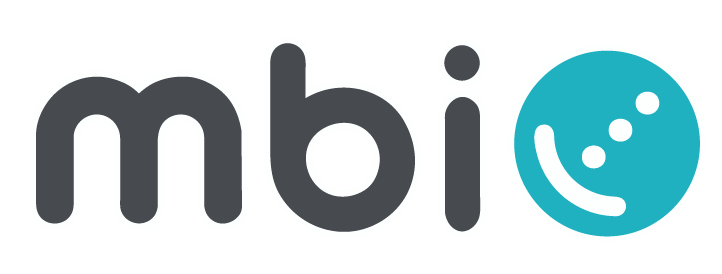
-
StatusCompleted
-
Status date2014-12-09
VideoSat for Distance Learning (V4DL) aims to exploit satellite broadband and broadcast capabilities, providing Value Added Services for Continuing Medical Education via Satellite.
The project carries two major innovations:
- Edufiction: a distance learning methodology that binds emotional and narrative learning theory with video simulation technology,
- Optimised user experience thanks to a specific Set Top Box capable of executing the specific e-learning application, managing the GUI and all the satellite data transmission functionalities.
The goals of the projects are:
- Build a STB capable of receiving multimedia interactive contents through satellite push and provide them to the users,
- Develop a push system integrated with a distance learning platform for telemedicine,
- Design, develop and deliver CME (Continuous Medical Education) courses through satellite push.
| The Set Top Box solution is based on the VideoSat concept design for an open STBs, which are capable of hosting different applications leveraging Satellite transport capabilities. Data connectivity is based on an OpenSky system reliant on the push and interactive services. Photo right: sample system representation. |
 click for larger image |
- Pushing network technology integration into an embedded STB,
- Integrating different domain: learning system and satellite system,
- Developing a cost effective solution tailored to the device,
- Using state of the art technology for video encoding for best quality and compression.
Implementing successful commercial services for the CME market. Implementing Hi-Tech solution for Value Added Services and integrated user experience via the VideoSat Set Top Box.
The V4DL project provides a flexible and integrated system for content distribution with a focus on training methods for medical trading purposes.
The V4DL system is based on an integrated solution between different components, via a Satellite Delivery system and a Distance Learning system:
- The Satellite Delivery system provides transport capabilities for the delivery of Multimedia content,
- The Distance Learning System is providing all the designated features in order to comply with strict CME regulation.
The project, furthermore, includes a purpose-designed Set Top Box in order to simplify its use and installation and to improve user experience via a Graphical User Interface which exploits Multimedia capabilities for Edufiction Applications.
The STB system carries a full set of control functions. Both the data-reception "Satellite Application" and the distance learning "E-learning Application" functions are built into the STB.
The V4DL system's main features are:
- Full compliance with CME requirements,
- Content delivery via Satellite Distribution,
- Customized Set Top Box user interface,
- User Interactve applications,
- Innovative distance learning methods: edufiction,
- Pre paid user billing solution.
The project is designed for a 15 month duration.
The project breaks down into major phases as follows:
- Defining "Edufiction" User Experience and Service requirements,
- Designing sample training videos,
- Integration of the VideoSat Set Top Box with the Distance learning application,
- Integrating the OpenSky delivery system the Distance Learning Infrastructure,
- Business Simulation with real customers (50 sites).
The V4DL pilot activities have involved 23 sites but they did not provide a significant usage of the system as from the very initial pilot phase. An interim interview process has been promptly carried out in order to gather a feedback on the actual interest of the pilot users and to identify which corrective actions could be implemented in the remaining part of the pilot in order to increase the usage.
The pilot users have expressed the following feedback:
- The content and the overall services delivered were appreciated;
- The actual usage of the box is scarce due to the fact that the “distance learning model” is time consuming and it prevents the doctors from attending the residential meeting. In a nutshell, despite the logistic and budget impacts of business trips, Doctors have realised that they prefer to have a residential congresses instead of a daily fruition of the same contents at home/studio. This is also motivated by the opportunity to interact with colleagues about non medical topics, such as medical organizations, laws and lobby.
The feasibility to pursue some potential alternatives, by involving different customers such as EUREKA (medical content provider) has been investigated as well. Unfortunately, no concrete follow up was identified for a significant pilot activity. Consequently, no significant commercial interest from stakeholder or commercial partners has been identified in order to start up the commercial roll-out.
It has been therefore decided to stop the pilot activities with medical and educational market and consider a possible alternative in non medical areas. Specifically, it has been decided to adapt the V4DL platform (renamed to “VideoSat Push TV”) to a distance learning/information platform.
The Videosat platform provides for a Push TV service that leverages on the DVB-S IP Push system and video playback of stored contents. Multimedia contents like HD videos, photos, or articles can be easily pushed by the Content Provider (CP) via a web interface on internet and they are delivered in near-real-time via a dedicated satellite link to the STB hard disk, ready to be reproduced automatically (following a configurable play list) or on demand on the end-user TV screen. To be noted that the maintenance and the management of the STBs is done via the satellite forward link, without the need of a return channel (optionally available via an Ethernet interface on the STB).
The relevant CCN has been signed in March 2009 and the software customization has been completed in May 2009. In early June 2009 the pilot phase has started with ten users, including several potential Italian customers/stakeholder companies (e.g. Pentastudio, IPLab, CTA, ALPIMEDIA and Key4biz). The pilot phase has been successfully concluded in August 2009 with promising feedbacks gathered from the pilot community.
The final review has been successfully held in early November 2009 and OpenSky is currently advertising the VideoSat product in the European market. The first sales with some of the stakeholders involved during the pilot occurred in November 2009.





